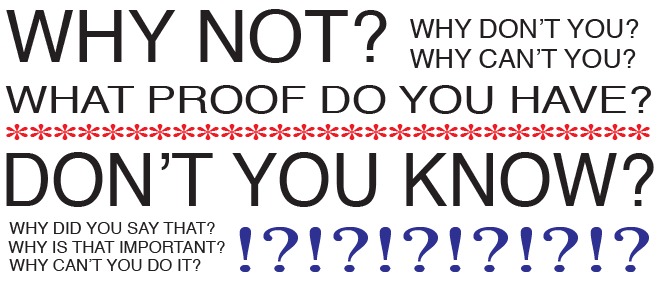
Assuming you cannot avoid calling on this person (which you often cannot), you need to have a response strategy.
These situations are stressful, but they don’t have to be. The most important thing to remember is to stay calm and resist your natural instinct to give an immediate answer and to be excessively defensive.
Try these steps:
Step 1: Remember that half of the problem is in your head. You have already anticipated a tremendous amount of pain, yet the person has not even begun to ask his question. There is no need to get upset unnecessarily. Push those feelings down. Summon your friendliest voice, smile, and ask for their question.
Step 2: Listen carefully to their question. Don’t worry too much about your response yet. If you are thinking too much about your response, you will not be able to effectively digest their question. Understanding what they are asking is paramount to responding effectively.
Step 3: Pin down the motivation behind their question. Reflect what you feel they are expressing back to them: “It sounds like your main concern is with the methodology. Is that correct?” This will push them to rethink their question and will give you additional time to begin formulating a response.
Step 4: Give yourself time to think by using a few delaying phrases: “Thank you for your question. (Brief Pause) There are a few ways I could respond. (Brief Pause) Let me say this.”
Step 5: Respond. When you do respond, try to focus on just one response and perhaps one supporting example.
Step 6: Wrap up and move on. When you have finished your response, say, “Thank you for your question. Does anyone else have a question?” This will help eliminate the possibility that the person will ask an aggressive follow-up question and will allow you to move on to questions from more supportive audience members.